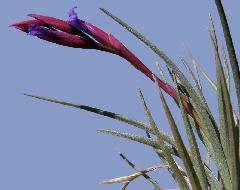
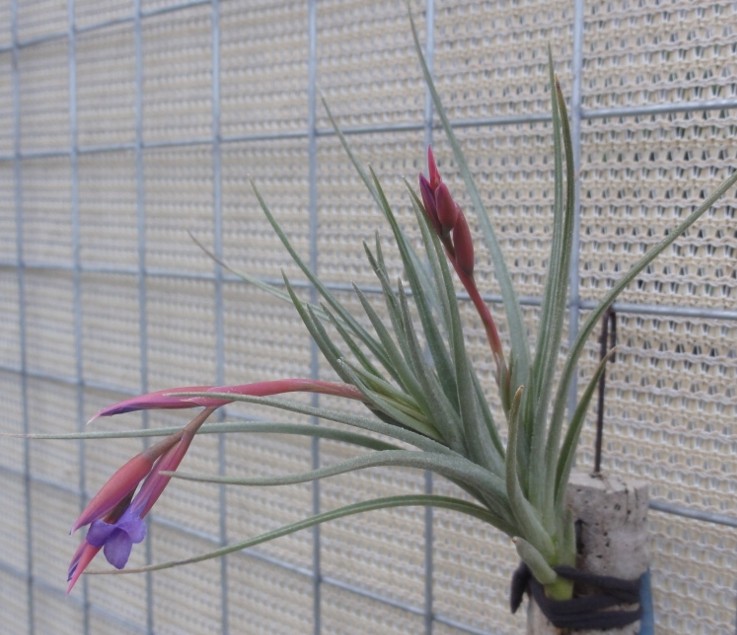
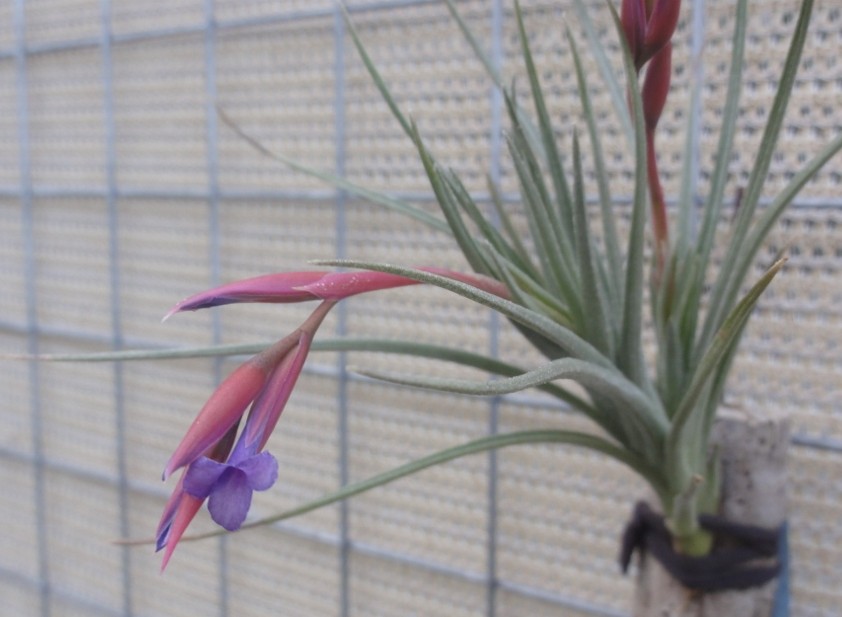
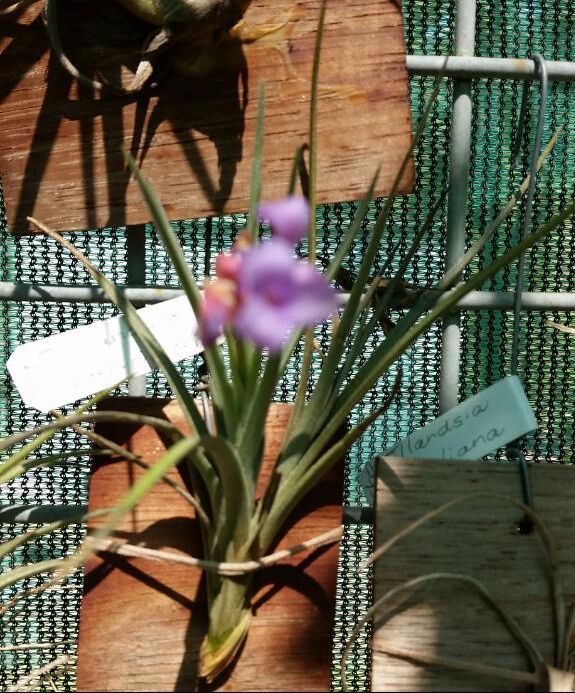
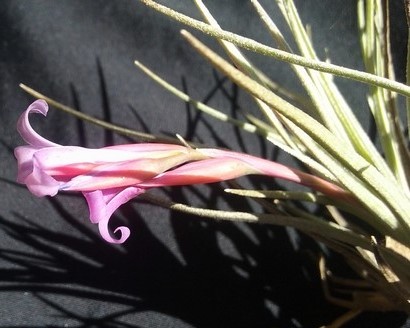
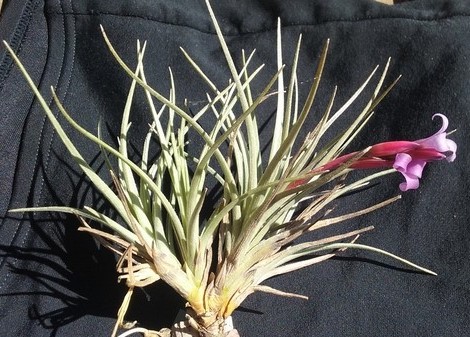
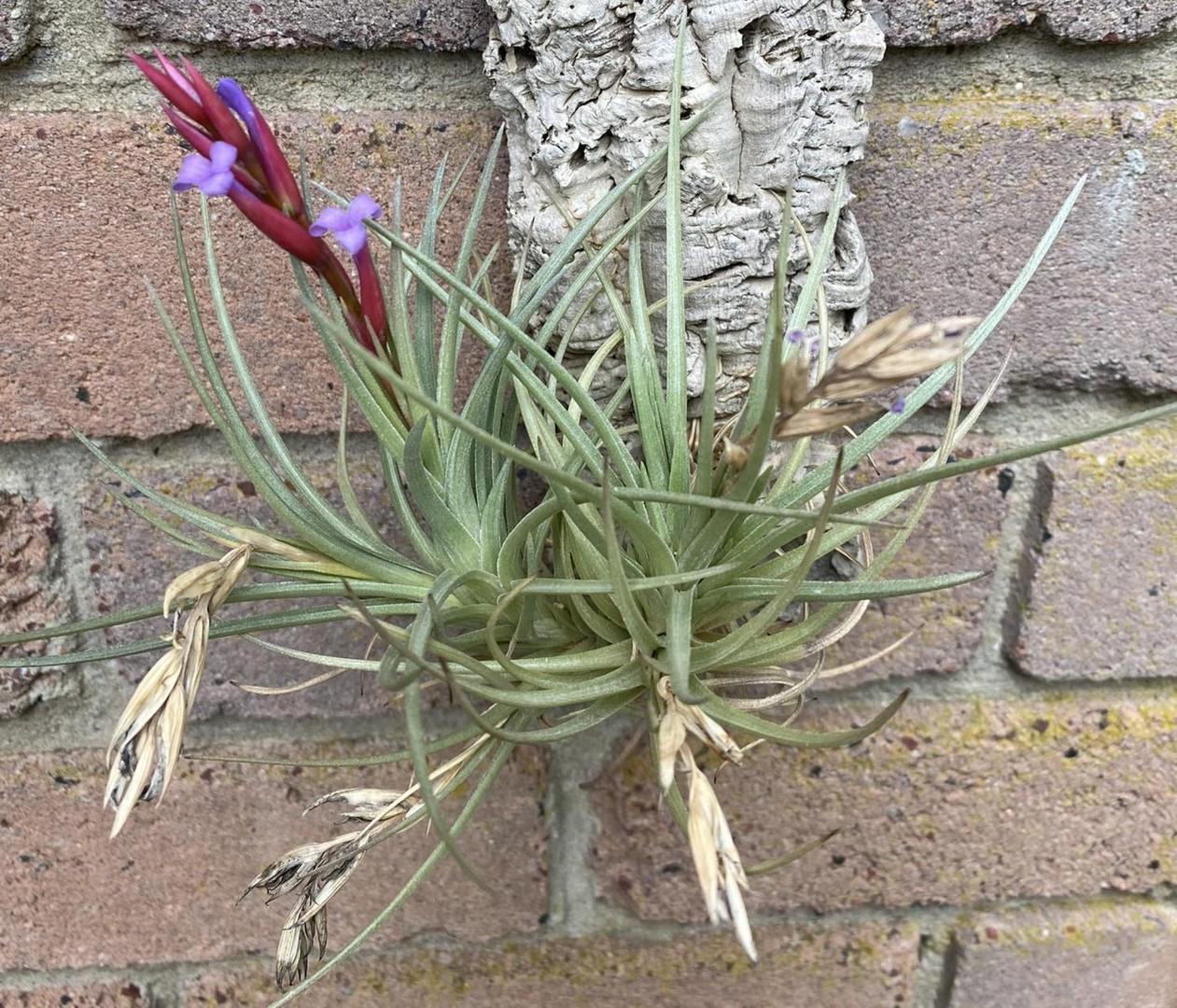
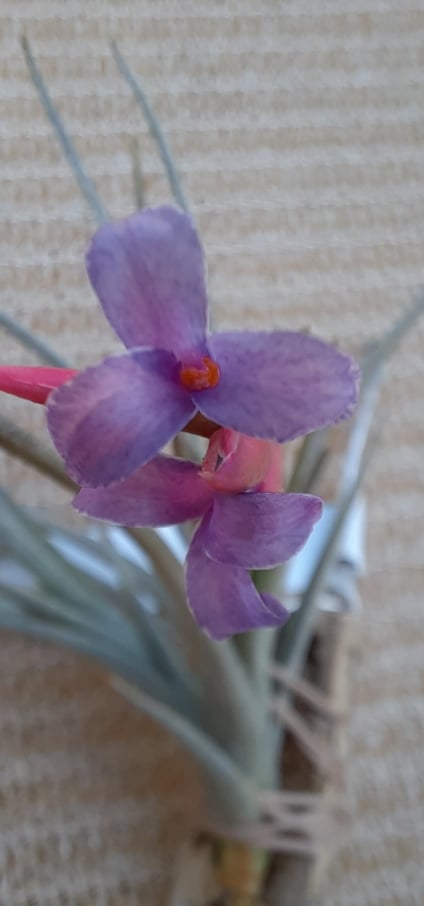
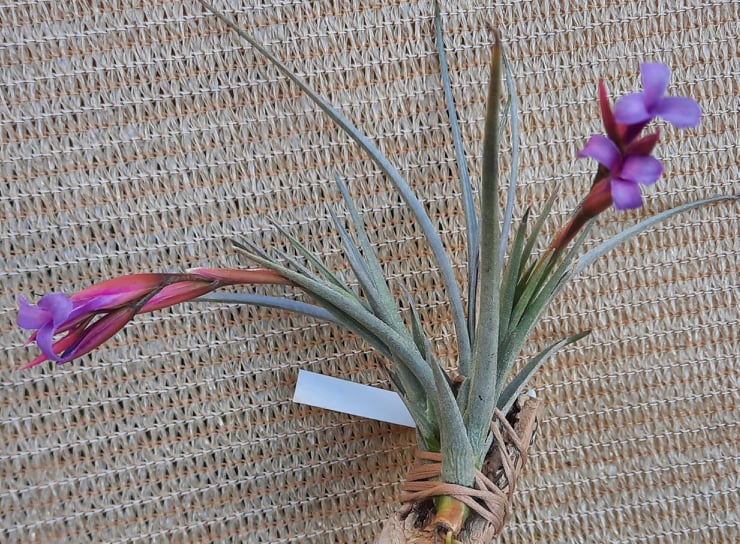
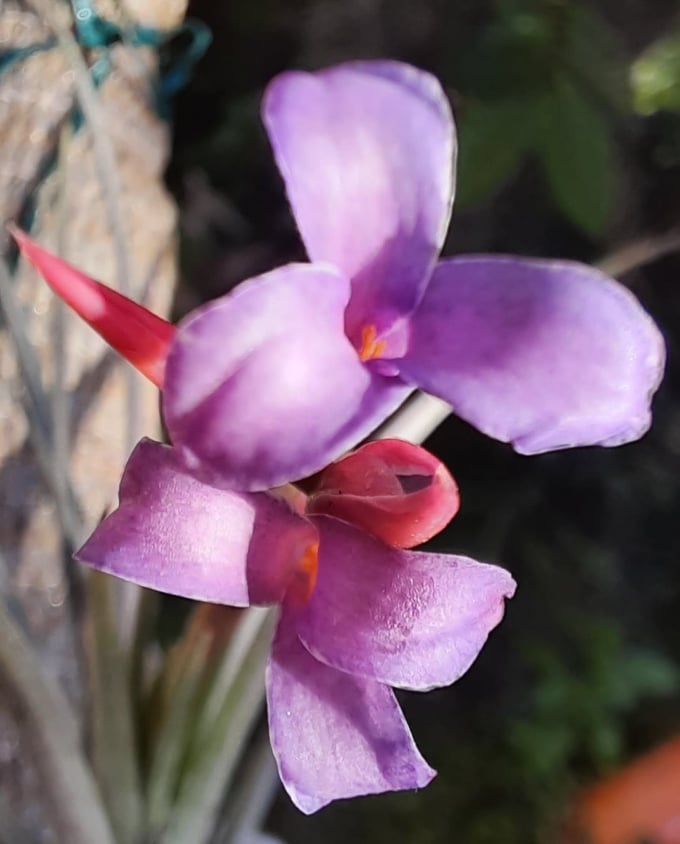
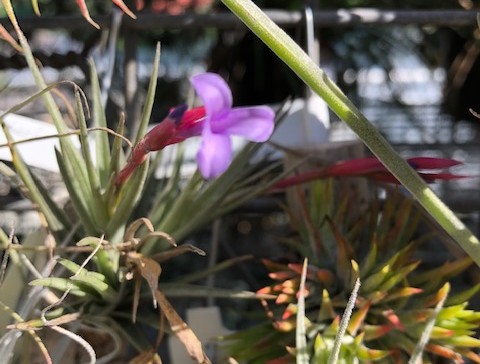
PLANTA: breve caulescentibus, gregaria, florens usque ad 20cm longa. FOLIA: suberecta, dense polysticha, ad 11cm longa, sordido-viridia. VAGINAE: indistincte limitatae, ad 15 mm longae, 9mm latae, rugosae, dense imbricatae, ad basim glaber. LAMINAE: anguste triangulatae, acutae, ad 85mm longae, supra vaginam ad 6mm latae, valde subtubulare canaliculatae, utrimque dense subappresso-lepidotae. SCAPUS: usque ad 75mm longus, teres, glaber, leviter curvatus, viridus, 1.5mm diametiens. BRACTEAE SCAPALIS: suberectae, anguste lanceolatae, basales ad 20mm laminatae, superiores apiculatae, apices subdense lepidotis, nervatae, viridiae vel modice rosaceae, breviora quam internodia. INFLORESCENTIA: simplex, laxe subpolysticha 4-5 florae, 35-45mm longa, rhachis geniculatis. BRACTEAE FLORALIS: suberectae, anguste lanceolatea, longe acuminatae et leviter incurvatae, 15-24mm longae, ad 6mm latae, coriaceae et late hyalino-marginatae, nervatae, ecarinatae, tantum ad apices indistincte, disperse lepidotae, roseatae. FLORES: subsessilis, erectis, ad 26mm longis. SEPALA: lanceolata, acuminata, 13-18mm longa, glaber, rosacea, posteriore valde carinata et usque ad 6mm alto-connata, multo breviores quam bracteis floralis. PETALA: ad 25mm longa, lineare-tubulata, ad basim albida, superiore et lamina coeruleo-violacea, recurvata. STAMINA: albida, applanata, 12mm longa, in tertiam superiore transversale plicata, ANTHERAE: 3mm longae, subbasifixae. STYLUS: aequilonga quam stamina, teres, stigmata indistincte minuta, glandulosa. OVARIUM: oviformum, 5mm longum, viridium.
Leg. Dr. Helmut et Lotte Hromadnik 5142; 24 July 1979; Bolivia: Dept. Tarija, Narvaez, saxicola, 1800 msm. , floruit hort. Peter Schneideri Jan. 1982 et Feb. 1984. Holotypus: WEB 410. From Till in Linzer biol. Beitr. 27/1: 413-421. 1995 (HAL Holotype, isotypes WEB410, 808)
PLANT: short caulescent, flowered to 20cm long, saxicolous in dense cushions.
LEAVES: suberect, dense polystichous, to 11cm long, solid green.
SHEATHS: indistinct, to 15mm long, 9mm wide, densely imbricate, bottom third glabrous, rugose.
BLADES: narrowly triangular, to 95mm long, above the sheaths 6mm wide, acute, rigid, somewhat channelled, with subappressed dense scales on both sides.
SCAPE: to 75mm long, terete, glabrous, slightly curved, green, 1.5mm in diameter.
SCAPE BRACTS: erect, narrow lanceolatel the lower with 20mm long-foliaceous blades, the higher with gradually reduced blades becoming apiculate; at apex dissite lepidote, nerved, coriaceous, shorter than the 15-20mm long internodes, changing from green to rose.
INFLORESCENCE: simple, laxly subpolystichous, 4-5 flowered, 35-45mm long, rhachis geniculate.
FLOWER BRACTS: suberect, narrowly lanceolate, acuminate, somewhat incurved, 15-24mm long, to 6mm wide, coriaceous with broad hyaline margins, nerved, rose.
FLOWERS: subsessile, erect, to 26mm long.
SEPALS: lanceolate, acuminate, 13-18mm long, glabrous, rose, the posterior ones strongly carinate and usually to 6mm high connate, much shorter than the flower bracts.
PETALS: to 25mm long, linear-tubular at base and white, the higher parts and the narrow ovate blades blue-lilac, obtuse, reflexed.
STAMENS: white, 12mm long, flattened, in the upper third transversal plicate.
ANTHERS: 3mm long, dark yellow, subbasifixed.
STYLE: terete, white, equal in length to the stamens, stigmata indistinct, minute, glandulous.
OVARY: egg-shaped, to 5mm long, green.
This interesting new species was collected by Dr. Helmut Hromadnik and his wife, Lotte, of Austria, on 24 July 1979 in Bolivia, Dept. of Tarija, near Narvaez. It was found growing on steep rocks with Tillandsia maxima in a xerophytic forest. Specimens collected at that time flowered first in January 1982 and again in February 1984 in the collection of Peter Schneider, Greiz, G .D.R.
Tillandsia walter-richteri is closely related to the well known, but variable, T. argentina. The differences are mainly the suberect, not curved, leaves with acute, not abruptly obtuse-acute apices; the lax elongate, nearly polystichous inflorescence with geniculate axis, the relatively high connate, not subfree posterior sepals, and the blue-lilac, not rose, petals.
Walter Till considers this to be a natural hybrid with T. argentina and T. tenuifolia as both are common in the type locality. This is also the thought of Renate Ehlers, Lotte Hromadnik, Frank Hasse and Ewald Heger who have visited the type locality.